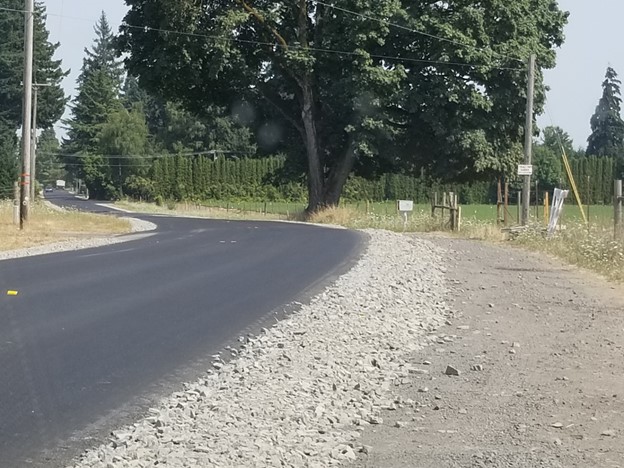During the North & East Texas Annual Conference in May, a panel of seasoned County Commissioners discussed Best Practices on Road Maintenance. County Progress asked two of the panelists to elaborate on their recommendations.
Johnson County Commissioner Rick Bailey
The key to a successful road – longevity – is in the prep work. High traffic roads generally are the priority roads. Shutting them down impacts local residents as well as emergency vehicles, school buses, etc.
A courtesy letter sent out with a guesstimated timeline for rebuild or repairs is a good practice; however, emergency situations may not allow notifications. It is always good to notify the sheriff’s office and other emergency responders.
The most important outcome is to have a “crown” in the road to shed water, as on some of our county roads, the slope may create the only drainage due to narrow rights of way. Remember, drainage is crucial.
Most, I would guess, use limestone road base for repairs or complete construction. On a lengthy project, reclaiming a road is the best solution.
I cannot emphasize enough the importance of layers and water for compaction. Once you pull off the location, the traffic can help the compaction while waiting on the ground temperatures to rise to produce a successful chip seal with emulsions and/or hot oils.
If your budget allows, there are polymer products available that are moisture barriers. These polymer products also help with dust control. We have vendors at conferences who sell these products, and they are there to help us.
A good recommendation once the project is completed is to take pictures for documentation and proof when heavy truck traffic begins to damage the roads.
As mentioned, longevity of a road starts with the prep work. A smooth surface and then a successful application of hot oil immediately rolled in pea gravel or chat rock provides years of service.
We as Commissioners have a great network in each other to pull from. Someone is dealing with your same issue in a neighboring county. Don’t hesitate to call upon them.
Cherokee County Commissioner Kelly Traylor
Your constituents think you have done your job if the driving surface is smooth. You can put a smooth surface on the road, but if the proper prep work hasn’t been addressed, then the longevity of the road is short term.
Our best county road maintenance practices start with trees. We are in the Piney Woods of East Texas. Dead or damaged trees are removed out of the right of way. They are also trimmed as high as possible to allow the sunlight to reach the road surface. Trees grows over the roads and create a canopy. The canopy will allow the roads to hold moisture.
Next, we address the drainage. The proper drainage will prevent erosion and base failures. Inspection of culverts and replacing them with the correct size to carry the normal water flow is a key step.
Road base is the next step we address. We are blessed with native iron ore in East Texas. We use this for base since it is native and abundant. This cuts down on our cost. We will use limestone on occasions.
When laying the base, we put our crown in it for the road to be able to shed water. The compaction of the base should be put in by layers. Once you get to the final layer, then the traffic can help with the compaction.
Now we are ready for the part that we as Commissioners are judged by, the surface. Some surfaces will stay with the material used as the base. You can use asphalt or chip seal for the final surface. We use oil sand on many of our roads; it is just that, oil mixed with sand. We add some aggregate with it. This surface can be milled up and relayed, which may cut down on the cost.
All of these practices have their own challenges. The major challenge comes in to play when you have to deal with traffic while performing these tasks. Most of the county roads are narrow, and some are dead-end roads. You have to allow residents to come and go, along with school buses, emergency vehicles and daily commerce (trash trucks).
The last challenges are your county budget, prioritizing projects, and Mother Nature.
There are many resources out there to help including the Texas Local Technical Assistance Program, your local TxDOT engineer, and your senior Commissioners in your county.
















